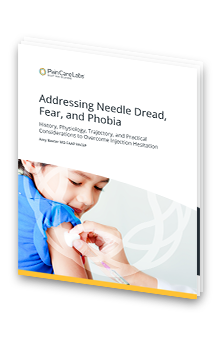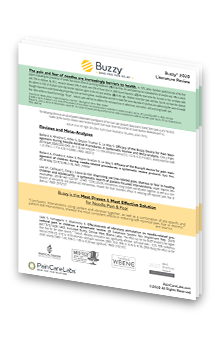Understand and address needle dread, fear and phobia with practical options to address injection reluctance and nonadherence.
Clinical Studies, TedTalk, & Case Study also available (see below).
.png?width=331&height=430&name=2020-11-24%20(3).png)
This white paper summarizes the past 50 years of needle pain research, including the causes and consequences of needle phobia, the physiology of vasovagal syncope and its conflation with fear, and discusses the impact of needle fear on adherence with research-supported options to address injection reluctance and nonadherence.
Needle fear began increasing in the U.S. when multiple booster injections were introduced in 1982, peaking when the vaccine schedule included 36 separate injections in 2000.
Lightheadedness, weakness, nausea, and syncope can be, but are not always associated with anxiety. Patients may have a physiologic reaction that can be addressed.
The health implications extend beyond the affected individuals. From flu shots to blood tests, needle avoidance has negative impacts on community health.

Key take-ways include:

Buzzy®, a medical device invented by Amy Baxter, M.D., is the most proven and most effective solution for needle pain and fear.
Download.png)
Dr. Baxter explains why needle fear is increasing, the impact on public health and how practitioners can better empathize with patients.
Watch Video.png)
Learn how Child Life Specialists use Buzzy® to improve patient care for special needs patients at Gillette Children's Specialty Healthcare.
Download